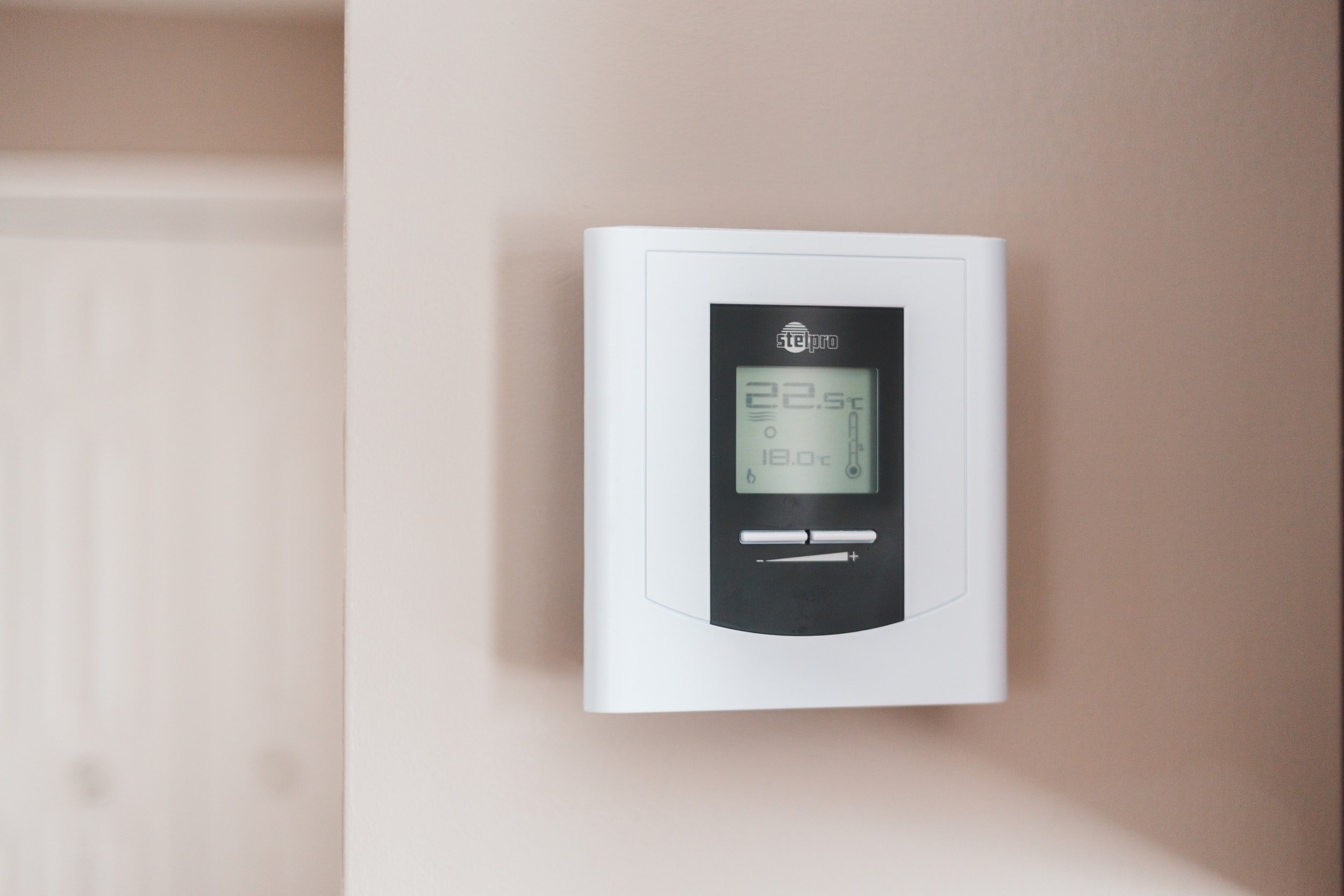Your central heating system is likely to be the biggest contributor to your household gas or energy bills. Which means by making small changes you can make big savings in your monthly bills.
Follow our top tips to get the best from your heating system :
boiler and radiator maintenance to boiler controls
find simple ways to cut your energy use and achieve cheaper energy bills.
Heating and hot water accounts for about 55% of a household's energy bills in the UK, according to the Energy Saving Trust (April 2020).
With the average home's energy bill set to increase by £695 from 1 April 2022,
We all need to make small changes to make big saving
1. Update your boiler and heating controls
Old boilers can cost more to run than newer ones – but given that buying a new boiler and having it installed can cost in the thousands, replacing it is not always cost effective. If you decide that replacing your boiler would be too pricey but your heating controls are old, just replace those – newer heating controls are much more accurate. Based on a typical three-bed semi-detached house, there is a potential saving of £75 a year by installing a thermostat, programmer and thermostatic radiator valves (Energy Saving Trust, May 2020). Not only that, but it could reduce your home's carbon output by 320kg every year.
Types of heating controls
The type of heating control you need depends on the type of heating system you have. But these are the general types available:
Timer – turns your boiler on or off at set times
Programmer – lets you set different times and temperatures for different days of the week
Weather compensating thermostat – adjusts the boiler operation based on the outside temperature
Load compensating thermostat – adjusts the boiler operation based on the inside temperature
Room thermostat – measures how warm your room is and adjusts the boiler operation accordingly (room thermostats are load compensating thermostats)
Thermostatic radiator valves (TRVs) – allow you to adjust the temperature of individual radiators and turn them off completely
Smart thermostat heating system – allows you to control your heating remotely via an app. Some are even 'weather responsive' like the Google Nest learning and the Worcester Bosch EasyControl. This allows them to act as a weather compensating thermostat.
2. Clean your radiator system
Making sure that your system water (the water that lives in your pipes and radiators) is clean and free of sludge will mean that your heating system is more efficient. It’s also good for the ongoing life of your boiler and central heating system. A clear sign that your system may be overly sludgy is if you have cold spots at the bottom on your radiators, or if some of your radiators take a long time to heat up compared with others. We at Abbey boilers offer a Power flush service for situations like this.
If you're getting a new boiler, a clean system is also essential to validate the manufacturer's warranty on your new boiler. Why when we carry out a new boiler install we provide documentation to confirm that this has been done.
How to check your radiator system is clean?
You can check how dirty your system water is yourself by simply bleeding a little into a container from your radiator valve. However, be aware that much of the dirt in the system will sit at the bottom, so bled-off water may appear to be quite clear, even in dirty systems.
Does my radiator system need a power flush?
Here are the different types of ways your system can be cleaned:
Gravity flush: A gravity flush can be done yourself if you're a competent DIY enthusiast. It simply means draining the water in your radiator system and replacing it with new clean water.
Power flush: A power flush will be more effective at removing sludge from your system, but it does require specialist equipment and can be expensive. The cost of a power flush for a five-radiator system can range from £300 to £750, with an average cost of £481.
Chemical flush: A chemical flush is a lighter clean with a chemical that will help to more gently ease the muck out of the radiator. A chemical flush doesn't require high pressure equipment, so should be a bit cheaper than the full power flush treatment.
After either of these processes, a chemical inhibitor should be added to the system water to prevent further sludge build up. This should cost around £20 and will help to protect your system water. It's important to remember that if you ever add system water to top up the pressure of your boiler system, then more inhibitor will need to be added to keep the concentration at the correct level. Products like magnetic filters, which cost from £90, can also be very effective at keeping your system water in a good state. They capture materials within a sealed system, that predominantly come from the radiators, and keep your system water clean. Some boiler manufacturers, like Worcester Bosch, offer a longer warranty on some of their boiler ranges if installed with a filter. In areas with particularly hard water, a water softening filter is a sensible precaution to prevent limescale build up on critical boiler parts - such as the hot water heat exchanger.
3. Check your radiators are balanced
You could have clean system water, but an unbalanced heating system will result in you spending more money heating up your home than it needs to.
Are your radiators balanced?
In an unbalanced system, when you set the thermostat to 20°C, the bedrooms might actually reach 23°C. While downstairs, where most of us spend the majority of our day, will still be too cold. If you turn the thermostat up, until downstairs reaches a comfortable temperature, then upstairs is overheated, resulting in a thermostat that’s set at too high a temperature, leading to higher bills. According to the Energy Savings Trust, increasing the temperature by just one degree will increase your annual heating bill by about 10%. So it pays to keep your thermostat as low as possible, while obviously keeping your home comfortable to live in. If you are having a new boiler installed, your system will need to be re-balanced. After the installation, you should insist that your heating engineer provides proof that your system has been balanced before paying for the installation. Ask to see the engineer's benchmark agreement, or simply run the heating for a few hours to check that your system is properly balanced.
4. Set your thermostatic radiator valves low
As with your room thermostat, you should set the thermostatic radiator valves (TRV) in each room at a low level, then gradually turn them up until the room's left at a comfortable temperature. Turning a TRV to a higher setting will not make the room heat up any faster – that depends on the boiler size and setting, and the radiator size. All it will do is keep heating the room until it’s at the temperature designated by the TRV. Despite their name, radiators actually work by convection. This means cold air enters at the bottom, is drawn through the radiator and hot air leaves through the top. You can reduce your heating costs by ensuring each radiator in your home is able to circulate heat properly. For example, moving furniture away, not using cabinets to disguise them, and making sure they're not covered by curtains.
5: Get the best from your thermostat.
It may seem obvious, but the hotter you have your home, the more money you'll spend heating it up. The Energy Savings Trust estimates your annual heating bill increases by about 10% for every degree you turn the thermostat up. Turning the thermostat down will therefore save you money, and a typical home can reduce their carbon emissions by about 300kg a year for every degree the thermostat is turned down, according to the Energy Saving Trust. Thermostat temperature tips Set the room thermostat to 18°C and then turn it up by one degree each day until you find a temperature you're comfortable with. Note that the temperature shouldn't drop below 16°C for elderly people and those with impaired mobility. Room thermostats need a free flow of air to sense the temperature accurately – they must not be covered by curtains or blocked by furniture. Nearby electric fires, televisions or lamps could also stop them from working properly. Many room thermostats are for one room only, and will turn your boiler off when the room it's sited in reaches the set temperature. For this reason, it's best to install your thermostat in a room that you use all the time.






